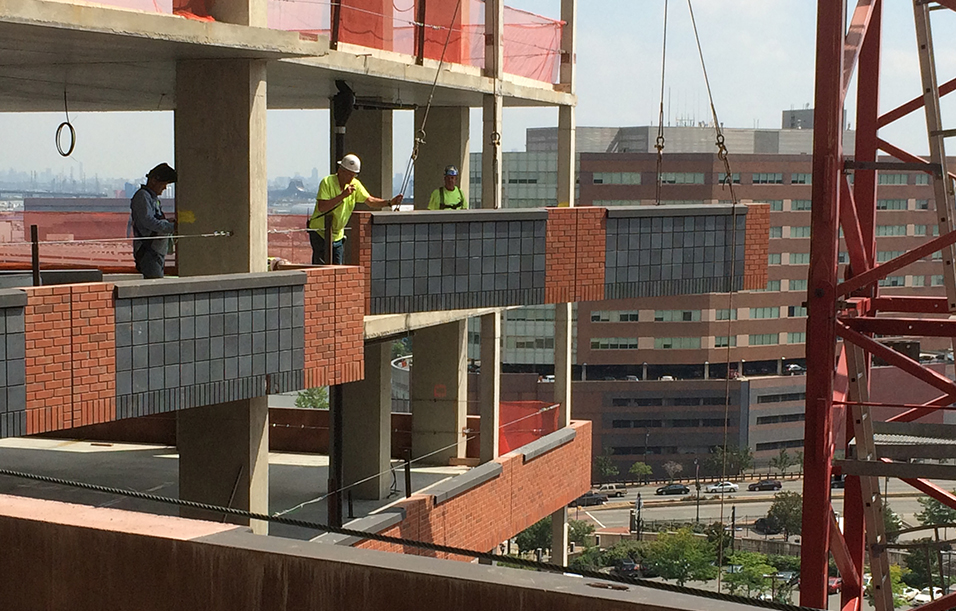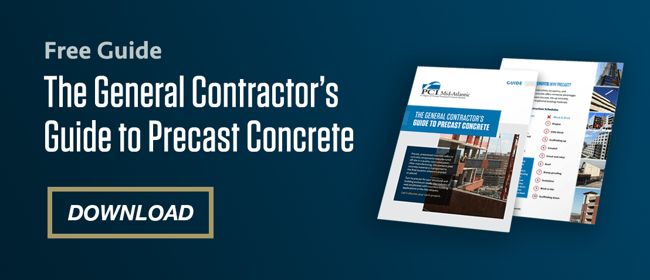When beginning any construction project, developers are often tasked with creating a plan that allows the whole team to remain both on time and on budget. Any variables that affect these factors, such as different types of construction methods, are crucial to consider early in project development. There are several framing options and building materials developers can choose from, such as wood, steel, block and brick, cast-in-place concrete, or precast concrete construction.
With modern precast concrete construction methods, we can save time and money through this versatile material’s cost-efficient and labor-conservative nature. Let’s discuss the many benefits of using precast construction methods.
The Preferred Choice: The Precast Construction Method
While block and brick construction and other methods create strong, safe buildings, the results of building with precast concrete are even greater. Like cast-in-place concrete, precast concrete structures are non-combustible and highly resistant to decay, rot, pests, extreme weather, and excessive weight demands. Let’s explore more advantages of the precast concrete construction process.
- Time savings: Precast concrete construction enables accelerated building time. Prefabricated concrete pieces are poured in controlled environments and brought to the job site right on time. Expansive layouts often require duplicate panels, and precast can be poured in the same molds to match exact specifications for consistency, repetition, and efficiency.
- Design assist: When using precast construction, fabricators can collaborate with designers early in the construction process. This proactive collaboration can significantly reduce construction costs and shorten the building’s overall completion time.
- All-weather construction: Precast concrete can be poured independently of weather-related interferences, as precast is poured off site in a controlled environment, which is a luxury construction teams can’t have with block, brick, wood, or cast-in-place concrete.
- On-and off-site work: While precast is poured away from the job site, sitework can be completed before the arrival of the precast components. There’s no waiting for concrete to dry before being able to move on to the next phase of construction. This saves a lot of time and labor, speeds up the entire construction process, and expedites project completion.
- Safety and durability: Buildings constructed of precast concrete are naturally safer, more robust, resilient, and fire-resistant than alternative options. Precast also promotes a longer life span than other construction methods and requires less building maintenance over time.
- Structural versatility: Precast concrete is a strong, cost-effective, and flexible framing option for structural and aesthetic design. Precast is poured to match unique specifications, meet large load-bearing capabilities, and achieve high-performance structural framing requirements.
Explore a detailed breakdown of precast concrete construction in “The General Contractor’s Guide to Precast Concrete.”
Structural Framing Considerations
Precast concrete is a building material that can double as the primary structural system of a building—also referred to as a Total Precast System (TPS)—transferring roof, floor, and lateral loads. Precast enables designers to integrate structural and envelope systems and reduce total materials, costs, labor, and more.
Precast’s inherent design versatility allows for almost any shape element with flexibility in connection points and load paths. High strength, prestressed concrete structural members also deliver exceptional load-carrying capacity, resulting in fewer building elements and longer spans when compared to other structural systems. Precast design depends on functional requirements, building use, and the structural system as a whole, including connections and individual components.
Design loads must follow a load path from their origin to foundation. It’s desirable to design the members and connections for a robust and flexible frame rather than risk producing a weak failure mode. Lateral force-resisting systems are principal considerations in the project’s design phase. There are a variety of precast concrete designs that can be used to achieve these goals economically and effectively: shear wall systems, load-bearing walls, moment-resisting frames, hybrid systems, and diaphragms.
Are you considering the precast construction method for your next project?
The General Contractor’s Guide to Precast Concrete is an excellent resource for understanding the differences between traditional block and brick construction versus precast construction. We also detail benefits related to cost, installation, and safety and provide further resources to continue building your precast knowledge.
Are you interested in precast construction for your next project? Browse our project profiles to see the many advantages of precast concrete in action.






